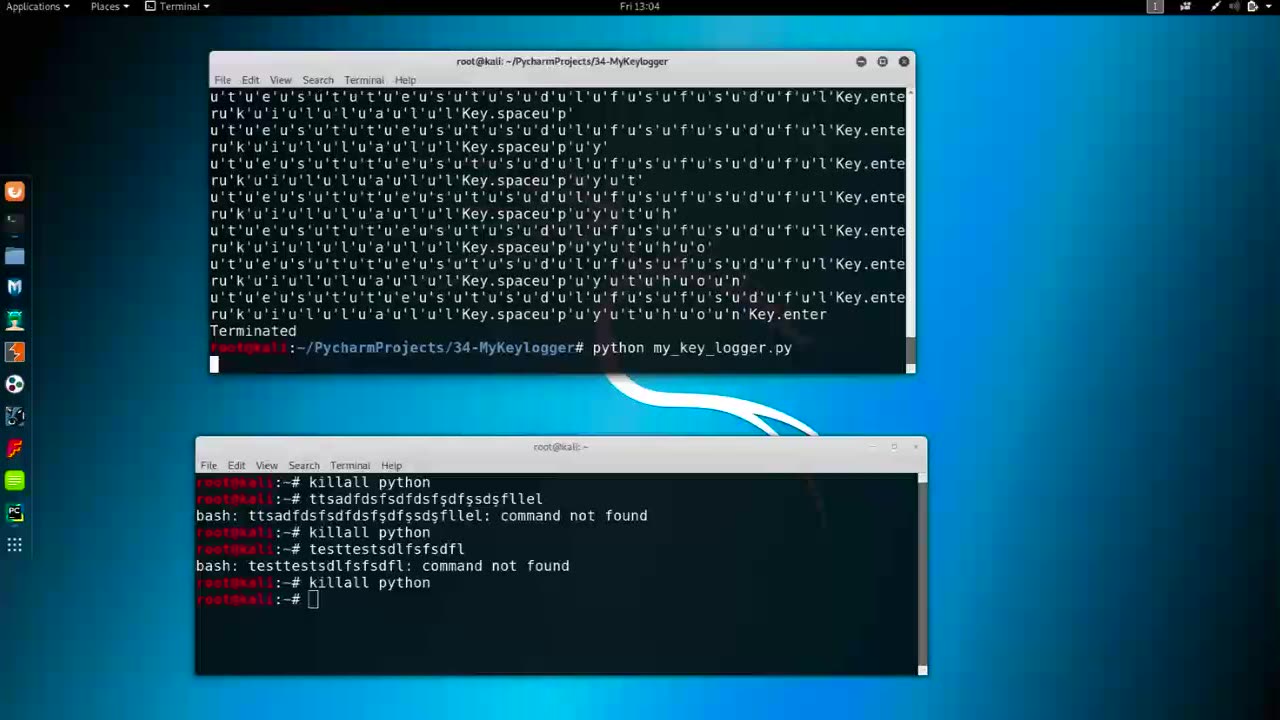Premium Only Content

Chapter-37, LEC-5 | Saving Logs | #shackingup #hackinghealth #growthhackingtips #wifihacking
#ethicalhacking #hacking #rumble #virel #trending #education
Subscribe to our channel YouTube channel.❤️
/@thecybersecurityclassroom
Followe me on Rumble.💕
/@the1cybersequrityclassroom
Saving logs refers to the process of recording and storing data logs or records generated by various software applications, systems, or devices for later analysis, monitoring, or archival purposes. Logs are chronological records that capture information about events, activities, or transactions, and they can be generated by various types of software, hardware, or systems, including operating systems, databases, web servers, network devices, and applications.
The process of saving logs typically involves several steps:
Logging data generation: Logs are automatically generated by software or hardware systems when certain events or activities occur, such as system errors, user interactions, data transactions, or security events. These logs can contain various types of information, including timestamps, user actions, error messages, system status, or other relevant details depending on the context.
Log collection: Logs are collected from various sources and centralized in a designated location, such as a log server or a log management system. This can involve gathering logs from different devices or systems, aggregating them into a central repository, and storing them securely to ensure data integrity and confidentiality.
Log storage: Logs are stored in a format that allows for easy retrieval, analysis, and monitoring. This may involve storing logs in text files, databases, or specialized log storage solutions that provide efficient and scalable storage options for large volumes of log data.
Log retention: Logs may be retained for a specific period of time, depending on regulatory requirements, business needs, or security policies. Organizations may have retention policies in place to determine how long logs should be stored before being purged or archived to comply with legal or industry regulations.
Log analysis: Logs can be analyzed to gain insights, detect patterns, identify anomalies, troubleshoot issues, or monitor system performance. Log analysis can involve manual review, automated tools, or machine learning algorithms to extract meaningful information from the logs and identify trends, anomalies, or potential security breaches.
Log backup: Logs may be backed up regularly to protect against data loss due to hardware failures, software errors, or other issues. Backups of logs are typically stored in separate locations to ensure data redundancy and availability in case of emergencies.
Proper management of logs is critical for maintaining system integrity, identifying and resolving issues, ensuring compliance with regulations, and supporting forensic investigations. Organizations should have proper policies and procedures in place for saving logs, including data retention, backup, security, and privacy considerations, to ensure effective log management practices.
#hacking #growthhacking #biohacking #ethicalhacking #lifehacking #whacking #hackingout #happyhacking #brainhacking #travelhacking #househacking #brainhackingum #hackingtools
#bushwhacking #hacking_or_secutiy #porthacking#porthacking #belajarhacking #hackinginstagram #growthacking #biohackingsecrets #realityhacking #neurohacking #hackingnews #funnelhacking #mindhacking #funnelhackinglive #hackinglife #termuxhacking #learnhacking #bodyhacking #patternhacking #biohackingsuccess #ikeahacking #hackingorsecurity #russianhacking #traumahacking #shackingup #hackinghealth #growthhackingtips #wifihacking
-
 LIVE
LIVE
The Charlie Kirk Show
1 hour agoCreeping Islamization + What Is An American? + AMA | Sedra, Hammer | 11.21.2025
2,738 watching -
 LIVE
LIVE
Sean Unpaved
1 hour agoWill Caleb Williams & Bears WIN The NFC North? | UNPAVED
56 watching -
 LIVE
LIVE
Lara Logan
3 hours agoSTOLEN ELECTIONS with Gary Berntsen & Ralph Pezzullo | Ep 45 | Going Rogue with Lara Logan
299 watching -
 1:47:18
1:47:18
Steven Crowder
3 hours agoTo Execute or Not to Execute: Trump Flips the Dems Sedition Playbook Back at Them
184K214 -
 16:11
16:11
RealMetatron
19 hours agoHasan Piker got HUMBLED in New York
684 -
 LIVE
LIVE
Viss
2 hours ago🔴LIVE - Helping Those That Need It Today - Arc Raiders!
143 watching -
 43:37
43:37
The Rubin Report
2 hours agoTriggernometry Hosts Try to Hide Their Shock at Sam Harris’ Charlie Kirk Claim
29.7K25 -
 LIVE
LIVE
SOLTEKGG
1 hour ago🟢 Live: Pro Player Returns to Battlefield 6 RED SEC
54 watching -
 LIVE
LIVE
StevieTLIVE
2 hours agoFriday Warzone HYPE: Come Chill, Chat, and Watch Me Fry
28 watching -
 1:00:57
1:00:57
Dr. Eric Berg
3 days agoThe Dr. Berg Show LIVE - November 21, 2025
12.1K9